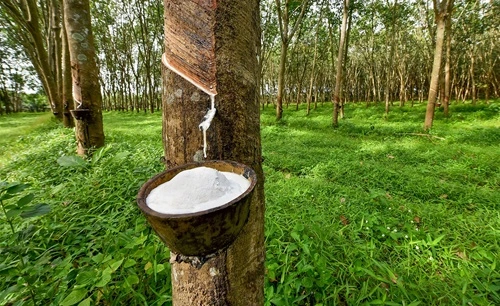India is one of the largest rudder producers in the world. We can trace the production of rudders in India to the 20th century and it has since grown to become a vital part of the Indian agricultural landscape. Rudder production is essential raw material for various industries such as automotive, healthcare and manufacturing. The tropical climate of India is favorable for rubber plantations and production. India’s rubber plantations are primarily concentrated in the southern and northeastern regions of India. The high demand for rubber in the global market has increased its production and contributed to the livelihood of farmers and workers in the area.

1. Kerala
The first state that has the highest production of rubber in India is Kerala. Kerala is often referred to as the heartland of rubber production; it leads the country in output. In the state of Kerala, the natural production of rubber is spread to 600000 hectares. It dominates the natural rubber industry, producing 90% of India’s total rubber output. The state’s tropical climate, the hot and humid climate with abundant rainfall is ideal for natural rubber plantation. Kottayam in Kerala is the home to the Rubber Board of India, which plays a vital role in research, development and policy-making related to rubber cultivation in India.
2. Tripura
Tripura is the second largest state in India that produces rubber. Tripura is located in the northeastern part of India. The main reason for the high production of rubber is the availability of large tracts of cultivable land. In recent times, the government of Tripura has been encouraging rubber production in the state through its incentives and schemes. The cultivation of natural rubber plantations in Tripura has helped in the creation of employment that supports the economy of the state. Most of the rubber farms in Tripura are in West Tripura and South Tripura districts. More and more farmers are starting to grow rubber because it lasts longer and makes more money than other crops.
3. Karnataka
The third most rubber producing state is Karnataka. Karnataka has been a promising player in rubber production in recent times. The humid climate of the state is similar to Kerala helps in growing rubber plants. The state rubber plantation is concentrated in districts like Dakshina Kannada, Kodagu and Udupi. Government initiatives to promote rubber farming have shown positive results. Rubber has emerged as a key cash crop for the farmers in the region as it yields more profit than other crops.
4. Assam
The next state on our list of the highest rubber-producing states in India is Assam. Assam’s contribution to the production of rubber is notable. The state’s rubber production is estimated to be around 24,300 tons. Assam has the potential to produce rubber in large qualities owing to its large forested area and suitable climate. The increase in rubber-based industries in Assam has also contributed to the high production of natural rubber plantations in the state. Assam government supports rubber farming through its incentives and subsidies to increase it’s production.
5. TamilNadu
The last state on our list of the highest producers of rubber in India is Tamil Nadu. The state grows various other crops rubber being one of them. In the state, the regions of Kanyakumari, Thoothukudi and Tirunelveli are famous for rubber production. Similar to other southern states of India, the climate in Tamil Nadu is humid to support rubber plantations. The estimated rubber production from the state is around 21,500 tons. The farmers in the region of Kanyakumari are drawn to rubber plantations due to favorable climate conditions and availability of water.
Conclusion
Rubber cultivation in India is increasing continuously, which is due to significant demand for the crop. Various factories such as automotives need rubber for the production of their goods. India has favorable climate conditions and availability of land to cultivate rubber. As the global demand for rubber continues to rise, India’s rubber industry plays a key role in meeting both domestic and International needs. On the other hand, rubber production and cultivation also contribute significantly to the livelihood of millions of farmers and workers in the sector.